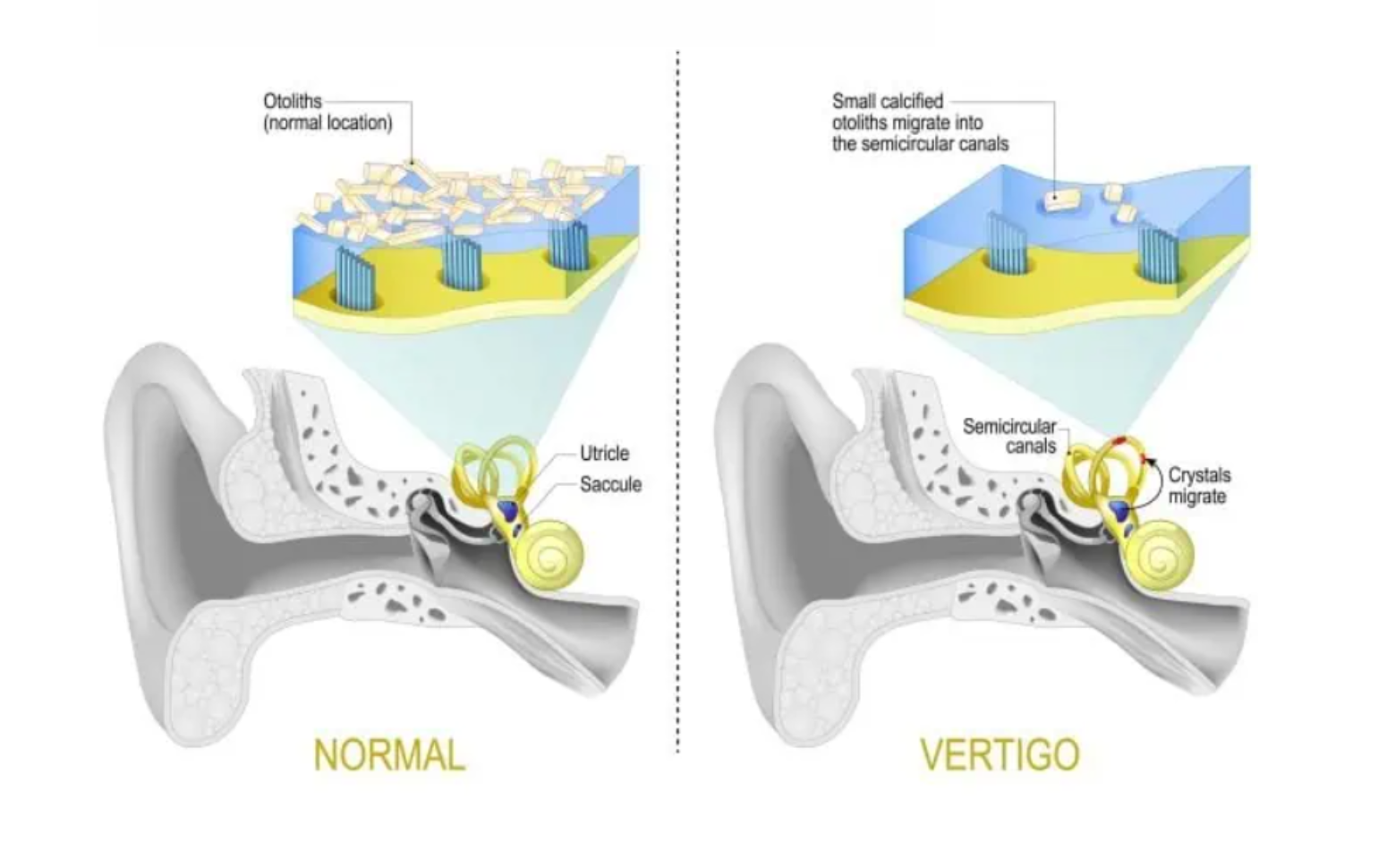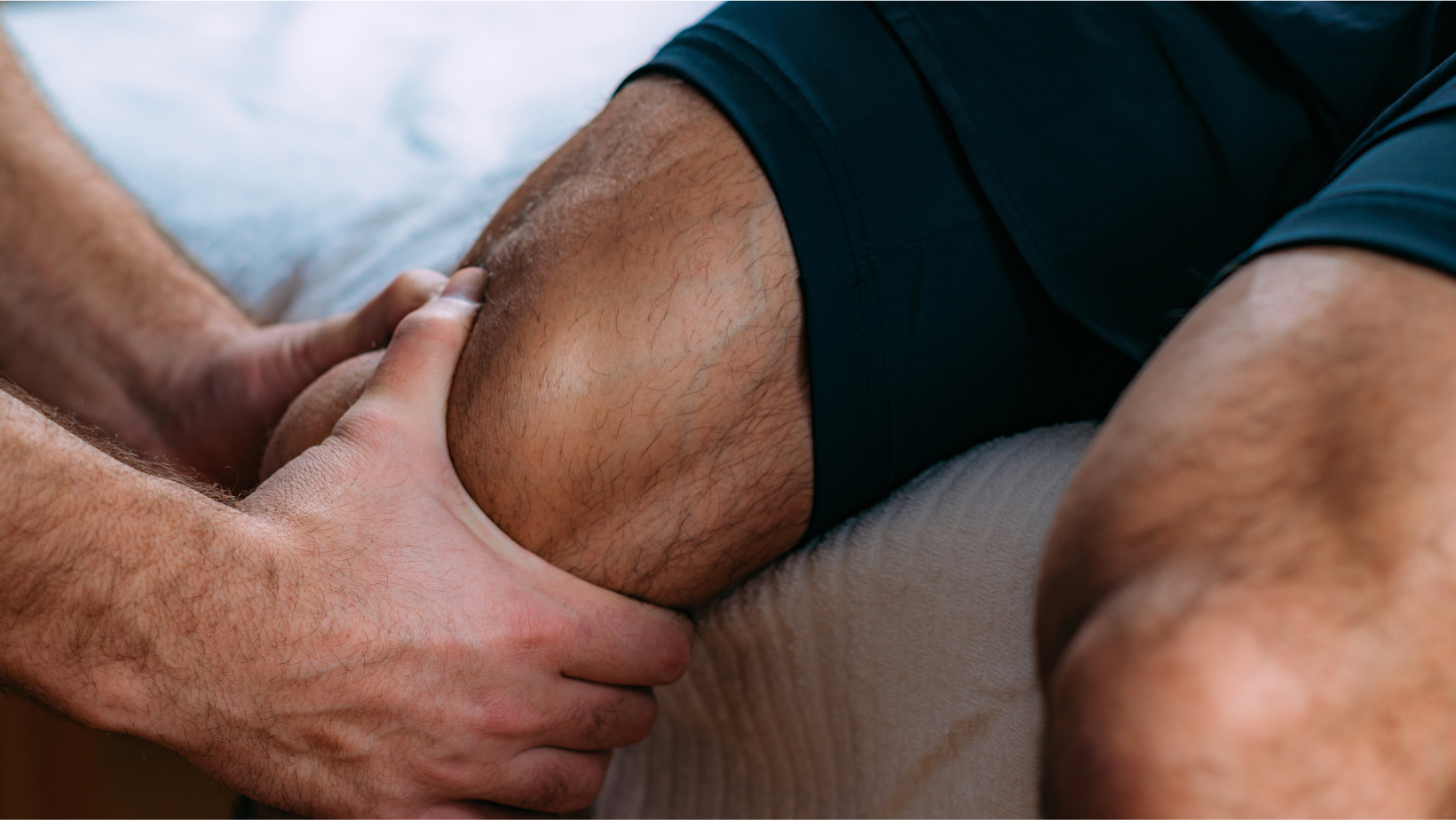What is BPPV & How Physiotherapy Can Help
Benign Paroxysmal Positional Vertigo (BPPV) is a condition that affects numerous individuals, causing brief but intense episodes of dizziness and vertigo. This vertigo is triggered by certain changes in the position of the head. It's a common condition, especially amongst adults, but what exactly is it and how can physiotherapy help manage its symptoms?

What is BPPV?
BPPV occurs due to the displacement of tiny calcium carbonate crystals, known as otoconia, within the inner ear's semicircular canals. These canals are crucial for maintaining balance and providing feedback to the brain about our position in space. When the otoconia are displaced, they can move into the posterior canals of the labyrinth, causing confusion within the central nervous system and resulting in dizziness and balance issues characteristic of BPPV.
This condition is the most common cause of vertigo, presenting symptoms like a spinning sensation, which is short-lived (less than a minute) but can be quite distressing. Symptoms are specifically triggered by changes in head position relative to gravity. While it doesn't lead to hearing loss or tinnitus, it can bring about nausea, vomiting, blurred vision, headache, and neck pain.
How Can Physiotherapy Help?
The role of
physiotherapy in managing
BPPV
is pivotal. The primary aim is to reposition the displaced otoconia from the sensitive inner ear areas to places where they cause less disturbance. This is achieved through specific maneuvers that have been developed and refined over time, such as the
Canalith Repositioning Procedure (CRP), also known as the
Epley maneuver.

The Epley Maneuver: A Closer Look
The Epley maneuver involves a series of calculated head movements, conducted by a trained physiotherapist, designed to guide the otoconia out of the affected semicircular canal. It's a highly successful technique, with an 80-100% success rate in most cases, significantly reducing or even eliminating the symptoms of BPPV. The maneuver is considered a low-cost, safe, and effective treatment option, offering relief to those who experience the unsettling symptoms of BPPV.
Research and clinical evidence support the effectiveness of the Epley maneuver and other physiotherapy interventions for BPPV. A systematic review and meta-analysis published in the Journal of the American Medical Association (JAMA) highlighted the maneuver's success in significantly reducing vertigo symptoms and lowering the risk of recurrence.
Prevention and Management
While BPPV can occur in any age group, it is most commonly observed between 50 and 70. It is rare in individuals under 35 without a prior head injury. Understanding the condition, recognising its symptoms, and seeking prompt treatment can greatly improve the quality of life for those affected.
Physiotherapy offers a beacon of hope for individuals suffering from BPPV, providing them with effective treatment options to manage and alleviate their symptoms. Through specialised maneuvers like the Epley maneuver, physiotherapists can make a significant difference in the lives of those dealing with this condition.
FAQs About BPPV:
BPPV attacks are primarily triggered by changes in the position of the head relative to gravity. Actions such as tilting the head up or down, rolling over in bed, or quickly changing head positions can displace the tiny calcium carbonate crystals (otoconia) in the inner ear, leading to episodes of vertigo.
The hallmark symptom of BPPV is vertigo, a sensation of spinning that occurs with head movements. This may be accompanied by dizziness, nausea, imbalance, blurred vision, and, in some cases, vomiting. Symptoms are brief, typically lasting less than a minute, but can be intensely disorienting.
If you have BPPV, avoid rapid head movements or positions that have previously triggered vertigo. Be cautious with activities such as looking up, bending over, or rolling quickly in bed. It's also advisable to avoid high-impact activities until your symptoms are fully managed.
Recovery time from BPPV can vary. With treatment, such as the Epley maneuver, many patients begin to feel relief immediately, though it may take a few days to a few weeks to feel completely normal. Some might experience brief, mild episodes of dizziness during this recovery period.
The quickest way to alleviate BPPV is through the Epley maneuver, a series of specific head and body movements performed by a trained healthcare professional. This procedure is designed to move the dislodged otoconia back to their proper position in the inner ear, often resolving symptoms quickly.
Contact Chelmsford Physio Today!
BPPV can be a challenging condition, but with the right approach, it's manageable. Physiotherapy stands out as a key player in treating BPPV, offering effective and non-invasive techniques. If you're experiencing symptoms of BPPV, don't hesitate to seek professional advice and treatment.
For those in and around Chelmsford, Essex, looking for assistance with BPPV or other physiotherapy needs, Contact Chelmsford Physio. Our team is dedicated to providing top-notch care, helping you get back to your best self.
Chelmsford Physio
Riverside Leisure Centre, Victoria Rd, Chelmsford CM1 1FG
GET IN TOUCH
Chelmsford Physio
Riverside Ice and Leisure Centre,
Victoria Road
Chelmsford
CM1 1FG
Tel:
01245 895410
Email:
hello@chelmsfordphysio.co.uk
STAY CONNECTED
Join our newsletter and find out more
Contact Us
Thank you for signing up!
Please try again later



